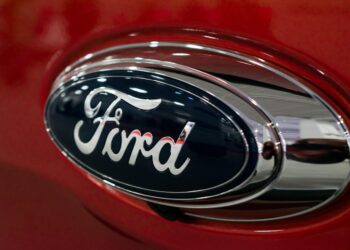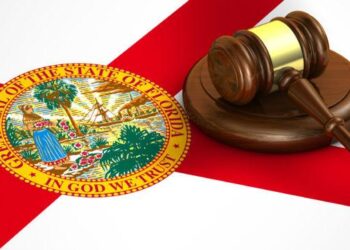If you are a new driver or you have just bought a new car, the first thought that crosses your mind would be the safety of your vehicle or any kind of financial coverage in case you accidentally damage another’s car. Your car insurance addresses all of your concerns. It pays for damage you cause to another person’s property, primarily a car, or an injury you cause to other people with your car. Knowing about what is car insurance is important.
You get to choose a coverage limit for your liability insurance. You can choose minimum levels of liability insurance, but choosing higher levels of coverage can protect you from having to pay tens of thousands of dollars out-of-pocket in the event of a serious accident. If you want to be reimbursed in time of need, you can file a claim. If the incident is covered, your insurance company will pay for the cost of the damage you caused or the damage to your car.
You can directly get the money, or the company will pay the other driver or the mechanic to fix your car. Most of the states in the United States require drivers to have car insurance. Driving without car insurance is illegal in these states and can result in fines or even in the loss of your license. In case you lease or finance your car, you’ll probably also be required to have more than the minimum amount of car insurance.
What is car insurance?
Car insurance is an agreement between you and the insurance company that provides protection to your vehicle against financial losses stemming from an accident or other damage in exchange for premiums. It is also known as vehicle insurance, motor insurance, or auto insurance.
The primary use of the policy is to provide financial protection against bodily injury, or physical damage resulting from traffic collisions and against liability that could arise from incidents in a vehicle. Besides, some policies may provide financial protection against theft of the vehicle, and against damage sustained from events other than traffic collisions such as keying, weather, or natural disasters, and damage stemmed by colliding with stationary objects.
The exact details of what is covered and not covered by the policy depend on a variety of factors including minimum coverage requirements for your state and any additional coverage options you choose to include. Auto insurance provides coverage for:
- Property damage or bodily injuries caused by an accident
- Vehicle damages, including your car or another driver’s insured vehicle
- Medical bills or funeral expenses associated with injuries sustained in an accident
Every state except New Hampshire requires drivers to have a minimum amount of bodily injury liability coverage and property damage liability coverage. While the specific terms of auto insurance vary with legal regulations of different regions in the country.
How does car insurance work?
Like other insurance policies, car insurance works in a similar manner: in exchange for paying premiums, the insurance company agrees to pay the losses outlined in the policy. Policies are priced individually so that you get the chance to customize coverage amounts to suit your exact needs and finalize them according to your budget. The terms of the policy typically span from six to 12-month timeframes and are subject to renewal.
Your insurance company will notify you when it’s time to renew the policy and pay another premium. Regardless of which state mandates having minimum auto insurance, nearly every state requires car owners to have bodily injury liability, which would cover costs associated with injuries or death that you or any other driver causes while driving your car.
Some states may also require you to have property damage liability insurance which covers others for damage that you or another driver operating your car causes to another vehicle or other property. While a good number of states go a step further, requiring car owners to possess medical payment or personal injury protection (PIP) which provides coverage for medical expenses for injuries sustained by you and your passengers.
Uninsured motorist coverage reimburses the policyholder when an accident is caused by a driver who does not have auto insurance. The coverage is designed to protect you when you’re involved in an accident with a driver who is covered with some insurance but not enough to cover the full cost of a claim.
Types of car insurance coverage
Liability
If you cause an automobile accident while driving your vehicle, and are found to be at fault, you are liable for the potential damages. In that case, liability insurance covers the other person’s auto repairs and medical expenses. The liability coverage is often referred to as “minimum coverage”, and is the very least insurance you can legally carry in most states.
There are two categories of liability coverage; you may be required to have both. Property damage liability insurance pays for repairs to things like folded fenders and dented doors. Bodily injury liability, on the other hand, covers repairs to people: things like doctor’s visits and physical therapy. A liability insurance plan does not cover your medical or repair expenses for your damaged car or your own injuries.
Personal injury protection (PIP)
The people’s injury protection is also called “no-fault” coverage and is required in some states by car owners. The policy pays for the medical expenses of the policyholder and anyone in the car with you at the time of an accident, no matter whose fault it is. Whether another car runs into you or you run into another car, the insurance will pay for medical bills. Besides, it also covers additional things such as rehab, childcare, even funeral costs, if you’re injured in an accident.
Comprehensive coverage
Although the word suggests that this insurance would cover everything, car insurance is not the case. Comprehensive insurance provides coverage for the repair or replacement of a vehicle that’s damaged from something other than an accident with another vehicle. For instance, if a tree falls on your car during a hurricane, or when hail dents your hood. It also covers damage caused by animals, and things like theft, vandalism, or riots.
It does not provide coverage for medical bills for other people or damage to other cars. Liability insurance comes into play in this case. It also does not provide coverage if you run the car into a fixed object such as a building or a light post. Your lender may require comprehensive coverage from you for your loan or lease. It’s optional in case you own the car outright. You can save some money by opting not to carry this coverage on an older car that you’ve paid off.
Collision coverage
Collision coverage somehow fills the gaps present in comprehensive coverage. It takes care of repairs when you hit another object with your vehicle whether it’s another car or a light post. However, it does not provide coverage for the damages caused by hail and animals. It covers you in any car you drive, not only your own.
With collision insurance, you get protection whether you drive your car or borrow one from a friend. It also covers damage to a rental car, but not in all states. So double-check before you make a plan for your vacation. You get the coverage for a fender bender in a loaner car from the shop while your car is being repaired. In case you’re in an accident that’s not covered by someone else’s liability insurance, collision coverage would pay for the repairs.
Note that it covers you, not another person’s car. So, coverage won’t be provided for another car involved in an accident or for any medical expenses for people in the other car. That is covered by your liability insurance. Collision coverage is usually optional, but it can be important for new drivers as they are more likely to make mistakes and ding some doors.
The policy requires a deductible, which is the amount you pay out of pocket each time you need to fix your vehicle. The limit for collision insurance is the value of your car, so in case you are driving a new car, it might be worth adding collision to your premium. If you are leasing or financing your car, your lender may require it.
In case your car is older, you can consider not having it as it won’t be worth the extra money. A deductible is needed with collision coverage, so you’re going to pay money out of pocket no matter what. It is up to you to decide if you’d rather pay a little extra money with each premium to avoid a big repair bill later or if you’d be comfortable keeping the money in your pocket now and paying for all the repairs yourself in case of an accident.
Flood insurance
The Federal Emergency Management Agency states that flood is the most common natural disaster in the United States which can happen as a result of dams and levees breaking, rivers overflowing, or snow melting rapidly. If your home is located in such a vulnerable location, you would require to have flood insurance.
The federal government administers flood insurance via the National Flood Insurance Program, which is run by FEMA. If you plan to purchase it, you can buy it through your insurance provider, but it’s issued at the federal level. The insurance offers coverage of your home for up to $250,000 and your personal property for up to $100,000. Personal property is referred to as “contents coverage” and it covers the contents of your house.
Note that your car is not covered by your home insurance even if you park it in the living room. Comprehensive car insurance does that and covers damage to your vehicle through natural disasters, and a flood is a natural disaster. So, choosing comprehensive car insurance would work best for you if you live in a flood-prone area and don’t want to pay all the potential car repair costs at once on your own.
Medical payments coverage
Medical payments coverage is optional. It covers you and the passengers in your vehicle at the time of an accident. It also pays family members listed on the policy even if they are in another car. If a car they’re in gets in an accident and they would need medical treatment, you would be paid by this insurance. It also covers your medical expenses if you get into an accident as a pedestrian or a cyclist.
The different thing about the medical payments coverage is that it kicks in after your health insurance has been used up. So if your health insurance has a limit of, say, $50,000 per year, but you need $75,000 for your post-accident treatment, medical payments coverage will pay for that extra $25,000. There are no copays or deductibles involved in medical payments coverage.
Once it starts, it can actually cover those out-of-pocket costs for you. For instance, let’s say that after you’ve reached the $50,000 limit with your health insurance, you are still required to visit your healthcare provider for treatment. Each time you go, there is a $20 copay. As your medical payments coverage is now responsible for your medical bills after the accident, it will pay the copay and the cost of the doctor’s visit.
Uninsured motorist coverage
Although state law says you have to have insurance to drive, it doesn’t mean everyone complies with that law. It is certainly possible that you’ll be involved in an accident with a car driven by someone without insurance or whose insurance doesn’t cover the costs of your medical bills or repairs. That’s where underinsured or uninsured motorist coverage comes in. Some states require it, So, you’ll want to see if that’s the case where you live.
Besides covering the cost of your repairs when the at-fault, or liable driver doesn’t have any or enough insurance, uninsured motorist coverage will pay for injury and death expenses. It can also come into play if you’re involved in a hit-and-run accident. Some states issue really low or nonexistent insurance requirements.
Remember that liability insurance might not even be required, which leaves you in the insurance lurch if you get into an accident with someone who is underinsured. If you are living in a state with low minimum insurance requirements, you might want to opt for this coverage.
Mechanical breakdown insurance
Mechanical breakdown insurance is not required by every state and it’s completely optional. So, it’s up to you if you want to pay a little extra money over time to avoid a large amount when something goes wrong with your vehicle. Some companies offer this insurance for new cars as an alternative to an extended warranty from the dealership. It’s also known as a vehicle repair plan or a vehicle service contract, depending on which insurer is selling it.
If you plan to get mechanical breakdown coverage after you’ve had your new car for a few months, it’s not too late. The insurance is usually available for cars up to one year old with fewer than 15,000 miles on the odometer. All new cars come with powertrain warranties and limited warranties. The length, however, depends on the manufacturer.
The limited warranty covers everything in the car for a shorter amount of time, mostly three to five years, but only if something breaks or is defective. Maintenance such as oil changes, or wear and tear like replacing a headlight bulb is not covered. The powertrain warranty, on the other hand, lasts longer, usually five years and it only addresses faults in the powertrain such as driveshaft, transmission, engine, and if it’s electrified in some way, batteries and motor.
Mechanical breakdown insurance adds coverage that lacks in the manufacturer’s limited warranty insurance. So, when you reach three years or 36,000 miles, the additional coverage would begin. But note that this insurance still might not cover wear-and-tear maintenance or items. Vehicle repair plans mostly include a deductible, so you’d still be required to pay out-of-pocket for each repair up to a specified amount, depending on your policy plan.
Any repair costs above that amount would be covered by insurance, as long as the repair in question is covered by the insurance policy. With vehicle service contracts backed by insurance companies, you can take your car to any mechanic of your choice rather than being locked into servicing your car at the dealership.
Gap insurance
With its name, you might think that gap insurance is meant to bridge a period of time when you’re without auto insurance for some reason, but that’s not the case with car insurance. Dealerships often offer gap insurance, also known as loan/lease gap coverage, when you purchase or lease a brand-new car. It’s common knowledge that the moment you get your car on the road, it drops the value like a rock.
Your brand-new car lease or loan won’t lose value over time. So, what you owe on the car is more than what the car is worth for the first few years. That is the gap covered by this insurance. Insurance is most helpful when you have a long financial term, maybe five years or more. Your monthly payments are smaller in those situations, therefore, the amount of time that you owe more than the car’s value is likely to be longer.
The gap insurance would also be useful if you have a low down payment on your new car. Gap coverage works when your new or newish car is totaled or stolen. That highlights the difference between the value of your car and what you owe on it. For instance, if your car is worth $20,000, when it’s totaled, the insurance company will pay your lender up to $20,000. But if you owe $22,000 on your loan, then you have to pay $2,000 for the loan in full.
Gap coverage helps you pay that $2,000 on a car you can’t drive anymore. Some lenders and leasing companies need this coverage, so make sure you have it before you sign on the dotted line and acquire the insurance in case you need it.
How much does car insurance cost?
As with many services, when you ask how much car insurance costs, you’ll usually hear “it depends” because it really does. But here are the elements you should consider to pay for in insurance:
The dreaded deductible
A deductible is an amount of money you pay out-of-pocket every time you receive a repair bill or medical cost before your insurance reimburses any money. If you hit an animal, for instance, your comprehensive insurance will cover the repairs.
You take your car into the shop, where it will cost you $1,500 to fix the bumper, windshield, and hood. If your deductible is $750, you’ll pay $750 and your insurance company will pay the remaining $750. In case, there’s less damage, and the shop quotes you $700 to repair the bumper. Because that’s less than the amount of your deductible, your insurance wouldn’t pay anything.
Unlike health insurance, vehicle insurance deductibles don’t stack. So, if you pay $500 for the damage caused by the animal and then hit another animal four months later, your deductible is still $750 for damages caused by the animal. Your insurance will cover any repair bills above $750 for the animal’s new dents. As long as you didn’t damage anyone else’s property, injure another person, or make your car unsafe to operate, you’re allowed to drive a beat-up car.
A higher deductible suggests that you pay less for insurance premiums. It is because you’re taking on more of the financial risk for repairs and medical bills instead of putting it on the insurance company. A lower deductible means higher premiums, but it also means paying less out-of-pocket at the shop or healthcare provider’s office after an accident.
There are zero-deductible insurance policies, where you don’t have to pay anything out-of-pocket, but they are expensive. Some coverages, such as underinsured/uninsured motorists and PIP insurance, need a deductible no matter what. And in situations where you’ve done something stupid to your own car, like backing into a garbage can and denting the bumper, you can choose not to repair the car and hence not pay the deductible.
Repair cost
Just like the cost of replacement, the cost of repairing your vehicle will come into play when figuring out how much the amount of your insurance will be. The insurance company will check on the types of repairs that are typical for the year, the make, and model of your car, and the costs of those repairs.
Value of insured vehicle
The value of your car is a big factor in determining how much it costs to insure it. A car having a higher value is going to be more expensive to replace than a car with a lower value. A new Mercedes-Benz GT sports car is going to cost the insurance company more than a new Honda Civic compact car. It is because if someone steals or totals your Mercedes, the company could be on the hook for as much as $100,000. In the case of the Civic, it might be more like $20,000.
The car’s location
Location is also important for car insurance as much as it does for real estate. In general, urban areas mean higher rates than rural areas. It is because there’s more traffic, which means more accidents that result in claims. Your vehicle is also more prone to be stolen or vandalized in a city than in a small town. Having anti-theft features for your vehicle can lower your rate of insurance.
It also matters where you park your car like where anyone can get to it or bump into it while they try to park? Is it in a private garage on your property next to your house? Is it in a shared parking garage? If it’s on the street, you can end up paying more for comprehensive and collision coverage. The more sheltered the vehicle is, the better when it comes to lowering your rate of insurance.
Demographics
Insurance companies use statistics to judge how risky your category is. The riskier your demographic, the more expensive your car will be to insure. Teenage males fare the worst, demographically. The numbers suggest that they’re the most likely to get into car accidents. No matter what age, males are more likely than females to have serious accidents and receive driving-under-the-influence citations.
Demographically speaking, all drivers get better as they age and gain more experience especially once they are over 25 years old. New, young male drivers are the most expensive to insure, whereas female drivers over the age of 25 are probably the least expensive. For eighteen years old males, there are things you can do to mitigate these demographic factors.
If you have a clean driving record, parking your inexpensive car in a safe place, driving fewer miles, and other things will help you lower the premiums. Note that while age and gender can figure into insurance rates, the insurance company cannot use ethnic, racial, and religious demographics as factors in your rate.
Your driving record
The first thing that is mostly being thought of when asked about their driving record is tickets, parking tickets, speeding tickets, all the tickets. All of these definitely count when it comes to determining the cost of your auto insurance, but there are other things that count too.
Your accident history also counts into what you’ll pay for new insurance, as well as serious traffic violations such as driving under the influence. If you’ve done it before, insurance companies assume you’ll do it again. They’ll make you pay for the risk they are taking in insuring your car. How often you drive your car also matters. If it is sitting in the driveway or in the garage most of the time, it is likely that it won’t get dents.
There is a tip for new drivers. Just because they have no history of accidents or tickets doesn’t mean they’re less expensive to insure. Demographically, new drivers make a lot of mistakes and get in a lot of accidents, making them some of the most expensive drivers to insure.
Your credit score
In recent years, insurance companies have started checking credit scores and incorporating that information into their calculation for auto insurance rates. In numbers, people with higher credit scores are less likely to file a claim. If you’re less likely to file a claim, you’re less of a risk to the insurance company, which lowers your rate.
Your insurance company may look at what types of credit you have, how long your credit history is, and your payment history. If you miss out on delinquent payments on your loans or credit cards will affect your credit score and your insurance rate. Insurers don’t look at your income when assessing your credit report.
How to save money on your auto insurance?
If you have a clean driving record and you live outside an urban area, it will help you save on car insurance, but if you’ve already got a few speeding tickets and an apartment in a high-rise, only a time machine and moving van will change those factors. There are other ways you can save on your car insurance, and most of them have to do with taking some of the risks off the insurance company’s plate. Here are some:
Change your deductible
By raising your deductibles, you can easily lower your insurance payments. Changing your deductible from $500 to $1,000, you can save about 9% on overall insurance costs. Insurance companies can offer you lower premiums if you agree to pay more of the repair costs upfront when you get in an accident.
Your budget would dictate if it’s wise to raise your deductible. If you possess a saving account with an emergency fund, then raising your deductible makes perfect sense. However, if a big repair bill would sink your household but a few extra dollars with each car insurance payment would not, then you can keep that low deductible intact.
Ask for a discount
If you are looking for better rates for our insurance plan, you can ask for it. The insurance companies offer many discounts that you may qualify for. Ask the insurance company or your agent who would better guide you. There are some factors that may help you to qualify for a few discounts, such as:
- Working a certain job like nurse or teacher
- Affiliation with groups such as AAA or university alumni programs
- Being a senior citizen
- Safety features on your vehicle, like anti-theft devices or blind-spot warning devices
- Good grades if you’re a student
- Military service
- Parking your car indoors
Shop around
Don’t stick to that one company that is near to your place or which your friend suggested. You can look around what else is there for other insurance companies if you are not satisfied with the rate your insurer is charging. You may save money by switching car insurance companies or your current company may be willing to price match a better offer to keep your business going.
Some people avoid shopping around for better car insurance from different places because they don’t know how. Or they don’t have time to spend hours comparing quotes from multiple websites. In that case, working with an independent insurance agent would be helpful because they would shop around for you and find better rates.
Drop coverage you don’t want
Before buying car insurance, know about unnecessary car insurance like GAP or premium coverage that would not be helpful for you. These add-ons will increase the rate of your policy but they don’t offer any more value than a good full coverage policy can provide you. If your car is paid off or you have enough money in the bank to replace it, you can drop collision and comprehensive coverage.
With these policies can be dropped off, one thing you should never cut back on is liability insurance. Repair and medical bills can cost you hundreds of thousands of dollars after an accident, which can probably be more than what your policy covers. In that case, you are liable to pay the rest. That is why, it is recommended to have at least $500,000 in liability insurance, so you’re in fact protected.
Change how you pay your premiums
As you make the insurance company’s job easier, you get thank you with discounts and lower premiums. You can make their job easier by changing how and when you pay your insurance premiums. You can choose the most feasible method of paying the bills. For example, you can:
- Pay in full: Paying your premiums for six months or a year at a time instead of paying on a monthly basis would cost you cheaper since it doesn’t cost the insurance company money to process your payments every month. To accumulate your annual or six months premiums, you can put a little money in your savings account every month so you are ready when the bill is due.
- Paying in advance: You should keep notice when the date of paying your dues is approaching, pay your bill on time, and don’t procrastinate. Some insurance companies offer discounts for paying premiums a month or so early.
- Set up automatic payments: You may get an advantage from some insurer companies for going paperless which means you won’t miss payments and you’ll have one less piece of mail to go through. You have to save a little each month so that your automatic payment doesn’t accidentally overdraft your bank account.
- Pay as you go: If you are driving less, you should pay less. Drivers who commute or don’t drive a lot can get greater discounts. On the way around, you can cut down on your driving and your insurance rates by carpooling with coworkers, using public transit, or relocating closer to work.
Buy an insurance friendly vehicle
Since new cars are more expensive to replace and repair, if they get any dent during an accident, they’ll make your insurance premiums skyrocket. So instead of buying a brand-new car, consider buying a second-hand used car that is 3-10 years old. Buying an old car doesn’t necessarily mean your car should look old too. You can find plenty of reliable used vehicles that look new so you look nice on the road while saving you money.
If you plan to buy a smaller car, that would give you even bigger savings, because smaller cars are simpler and cheaper to get repaired than big hulking vehicles. Thus, if your SUV or pickup truck is just a gas-guzzling status symbol that you don’t actually need, you can swap it out for a sedan. Or before buying a vehicle, you can actually call your insurance company and ask them about the policy rates. If you don’t like the rates, you can choose a different car.
Be a better driver









